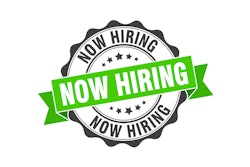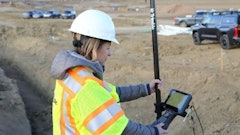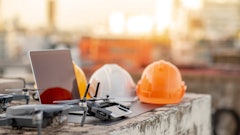
Here's the unhappy truth: There is no surefire way to hire a perfect employee. No matter how thorough you are, no matter how many references you check, or which hiring assessments you administer, you still never know precisely what you're getting until the person starts working.
That said, you can shift the odds of making a successful hire in your favor. Using some of the same tools and techniques that have long been used by major corporations, it is possible for small businesses to get a pretty good sense of who's being hired and whether that person is likely to be a good fit. This will require investing a little extra time and effort. But most small-business owners recognize that the results are worth the investment and some even consider the additional steps a mandatory part of the hiring process.
Case in point: The owner of a telemarketing company in Dallas a few years ago was looking for a bookkeeper when, presumably, Ms. Right walked in the door. She had it all: great communications and accounting skills and glowing recommendations from previous employers. Two years and several thousand dollars later, the business owner discovered that the ace bookkeeper was also an embezzler who had forged those recommendations. Ultimately, she nearly caused the business to go under.
An interview is your chance to get to know a potential hire and to understand those things about him or her that would best suit your business. But, job applicants typically display their 'party manners' in an interview. What's more, legal restrictions prevent interviewers from asking many kinds of questions whose answers would be extremely instructive in bringing to light any potential problems. So what can you do to take the risk out of hiring? Here are some ways to tip the scales in your favor:
- Use assessments to measure more than qualifications. Assessments measure a candidate's fit in relation to a job position and a corporate culture. The more a new hire is in sync with his workplace and the more a position meshes with his innate behavioral traits and values, the happier and more productive he'll be - and the longer he'll stay. Assessments done prior to the second interview provide insight into areas to both question the candidate and identify areas of weakness where training and coaching will be required.
- Conduct "behavioral interviews." Ask questions that require the candidate to give you clearly defined examples. If you ask whether the candidate is someone who takes initiative and she says yes, what good does that do you? Better to ask the applicant to describe specific scenarios when she took initiative - and succeeded and at least one example of when she failed. If a person is only comfortable talking about successful outcomes, that can be a significant red flag indicating a need to be careful.
- Interview In A Different Venue. When inviting serious candidates back conduct the second interview in a different venue, such as over lunch. This allows for a more relaxed encounter where the candidate is more likely to reveal himself. It is also a way to see how he performs in a social setting.
- Background checks are equally vital. Recent studies have shown that 34 percent of résumés and 73 percent of job applications contain false or embellished information - even at the highest professional levels. To counter this trend, employers should get as many references as possible.
- Get work samples. The best predictor of future performance and behavior is past performance and behavior so if you want them to write business plans for you, have them submit one they did in the past. Or get them to write a new one.
- Have other people interview the candidate - ideally, those who know your value system. For example, a client of mine in Dallas was hiring his first CFO but had no experience in working with that type of position. To remedy the problem I supplied a seasoned consultant who jointly developed the job description, prepared interview questions and conducted the interview with the President. This was a worthwhile situation as it taught the President more about what he needed in the position, what questions to ask during the interview, and helped him decide which candidate would work best with him.
- Make sure all interviewers prep for face-to-face meetings. Too many employers interview candidates without first compiling a list of questions. Begin the interview by giving an historical outline of the company, then get into the specifics of the position and why it is currently available. While the candidate responds to your questions, take copious notes. Observe the candidate's demeanor. Discern how well he or she knows your business. Note details like, did the candidate do research, take notes and ask relevant questions.
One of the biggest problems many startups and small companies face is that they don't have standardized systems or human resource departments in place. Consequently, they use superficial criteria to hire people, such as how they look or how they come across in an interview. Basically, they are looking for a certain stereotype that has been successful in similar roles such as where they went to school or if they have a certain professional background. Before you do anything, start with a clearly defined job description. It doesn't have to be etched in stone. But until members of the organization reach a consensus about the tasks, responsibilities and level of authority for the position, it's not even worth placing a job ad. Then, using a more organized method for hiring with all the tools available, including assessments, will help you look at the candidate through several lenses and reach a new standard for employees.
Linda Hanson, CMC, is a certified management consultant and author of 10 Steps to Marketing Success. She writes, speaks and consults on marketing, management and customer service issues and can be contacted at www.llhenterprises.com. Sign up for her free newsletter The Superior Performance Report.



















